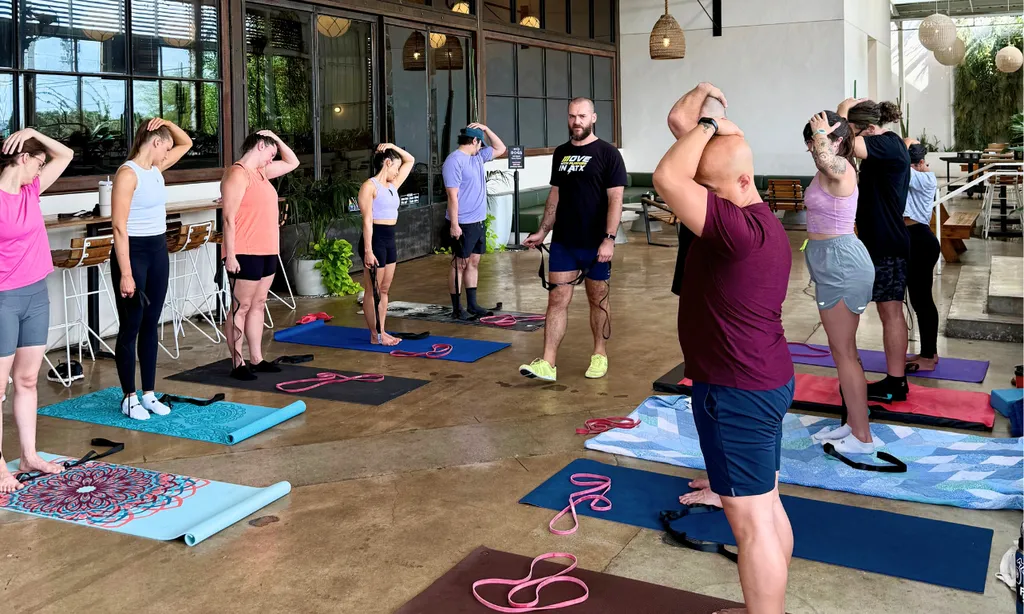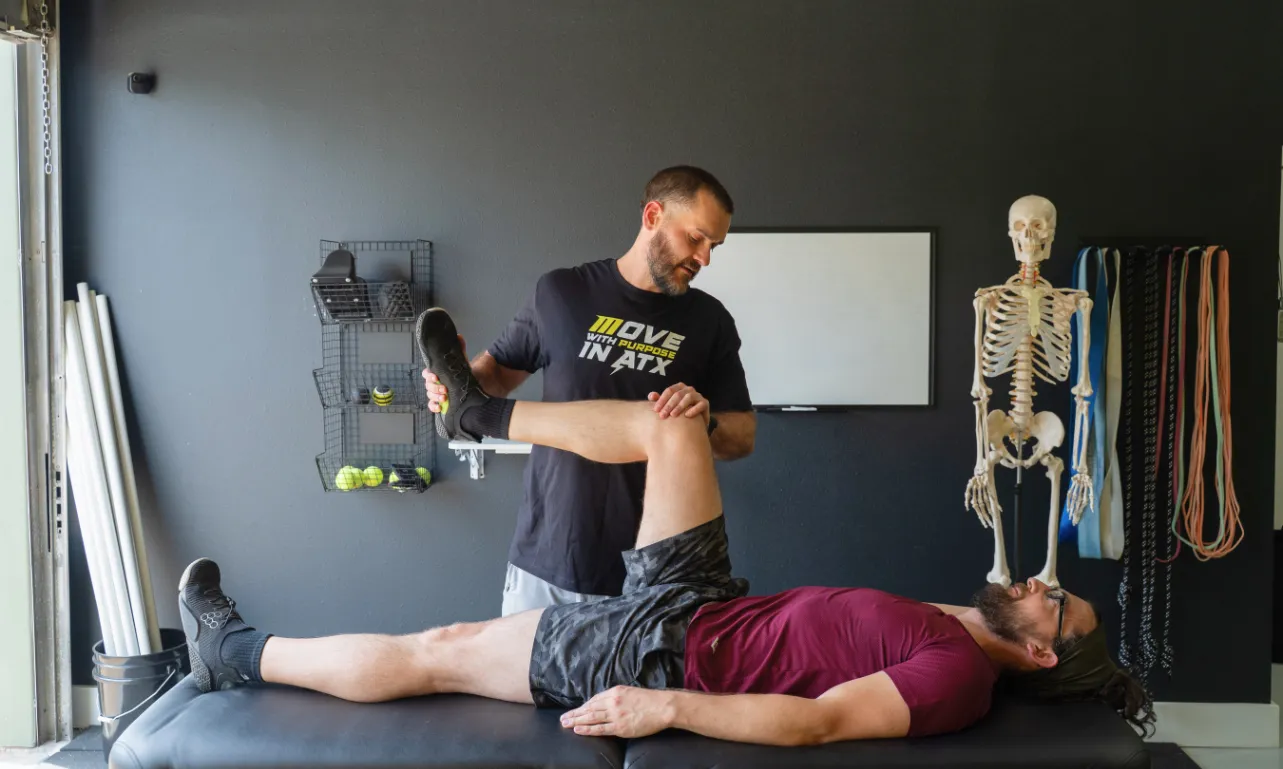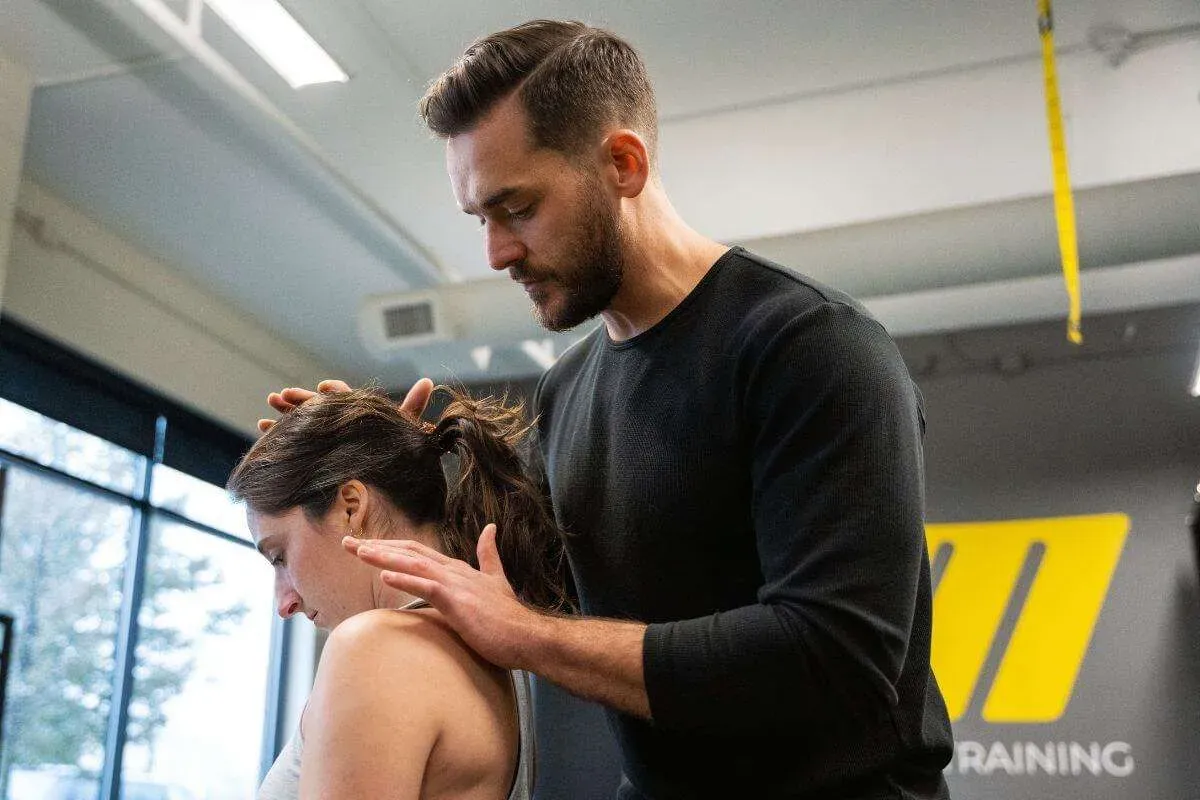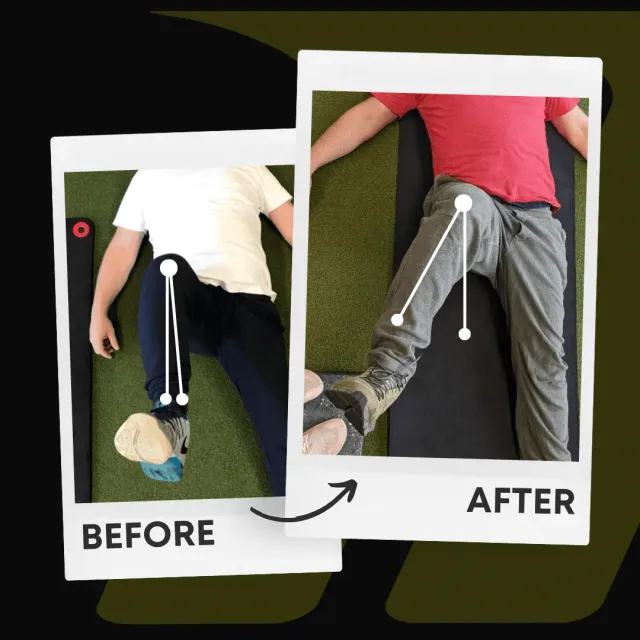Mastering Mobility: How Functional Range Conditioning Can Change Your Life
May 2, 2023 | Functional Range Conditioning

Functional Range Conditioning (FRC) is a comprehensive mobility and joint training system that aims to help you move better, feel better, and perform at your best. Developed by Dr. Andreo Spina, FRC is designed to improve your overall movement quality by targeting joint health, flexibility, and strength. As a result, FRC has become increasingly popular among athletes, fitness enthusiasts, and rehabilitation professionals.
FRC is based on the idea that when joints work well independently, they work better interdependently. Unfortunately, many people struggle with limited mobility and flexibility due to sedentary lifestyles, poor movement habits, and injuries. FRC seeks to address these issues by using targeted exercises and techniques to restore and optimize joint function.
At Motive Training, we integrate FRC into everything we do with our clients. As a result, not only will you experience increased flexibility and mobility, but you’ll also develop greater control and awareness of your body. This comprehensive approach to movement training sets FRC apart from other methods and can help you achieve your fitness and performance goals.
Benefits of Functional Range Conditioning
FRC offers numerous benefits for individuals of all ages and fitness levels. By focusing on joint health and mobility, FRC can help you mitigate injuries, improve athletic performance, and enhance your overall quality of life. Some of the critical benefits of Functional Range Conditioning include the following:
Injury Mitigation
One of the primary goals of FRC is to reduce the risk of injuries by improving joint health and resilience. By increasing your joints’ range of motion and strengthening the surrounding tissues, FRC helps your body absorb and distribute force more effectively. This can help prevent injuries caused by imbalances, overuse, or poor movement mechanics.
Dr. Spina has alluded to this idea many times; the position you got injured in is probably not the position you trained in. That’s why it is essential to train all of your joints through as big of a range of motion as possible. In addition, the more prepared you are for unplanned circumstances, the greater the likelihood you’ll walk away from a situation unscathed.
Improved Athletic Performance
Functional Range Conditioning can boost your athletic performance by enhancing mobility, flexibility, and body control. As a result, you’ll be better equipped to execute complex movements, generate power, and maintain proper technique during intense training sessions or competitive events. So whether you’re a weekend warrior or a professional athlete, FRC can help you reach your full potential.
Enhanced Quality of Life
Incorporating FRC into your routine can positively impact your daily life by improving your overall movement quality. With better joint health and mobility, you’ll find it easier to perform everyday tasks, participate in recreational activities, and maintain a healthy, active lifestyle. FRC can also help alleviate pain and discomfort associated with limited range of motion or joint dysfunction.
Key Components of FRC Programs
FRC programs typically consist of several key components designed to target various aspects of joint health and mobility. These components work together to provide a comprehensive approach to movement training. Some of the main elements of FRC programs include:
Controlled Articular Rotations (CARs)
CARs are a foundational FRC exercise that involves moving a joint through its full range of motion in a slow, controlled manner. This helps to maintain joint health, increase joint mobility, and develop body awareness. CARs can be performed for all major joints in the body and are essential to any FRC program. You can check out our YouTube playlist for an in-depth review of CARs.
Progressive Angular Isometric Loading (PAILs) and Regressive Angular Isometric Loading (RAILs)
PAILs and RAILs are advanced FRC techniques used to increase flexibility and strengthen tissues at the end range of motion. PAILs involve isometric contractions in a stretched position, while RAILs involve isometric contractions in a shortened position. These exercises help expand your functional range of motion and provide lasting improvements in flexibility. We wrote a more detailed article on PAILs and RAILs here.
Functional Range Release (FR) Techniques
FR techniques are a series of soft tissue management strategies used to address joint restrictions and improve overall joint function. By applying targeted pressure to specific areas, FR techniques can help mobilize dysfunctional tissue, improve blood flow, and promote overall tissue health. Combined with other FRC exercises, FR techniques can help optimize joint mobility and function.
How to Find Functional Range Conditioning Programs Near You
Finding a Functional Range Conditioning program near you is easier than ever, thanks to the growing popularity of FRC. To locate FRC practitioners or facilities in your area, consider the following steps:
Online Directories
The official Functional Range Conditioning website offers a practitioner directory that allows you to search for certified FRC professionals by location. For example, if you search in Austin, TX, Motive Training will be at the top of the list. That’s because all of our staff is certified in FRC through one means or another. That being said, if you’re not local to us, you should be able to find a practitioner in your area.
Social Media
Many FRC practitioners and facilities have an active presence on social media platforms such as Instagram, Facebook, and Twitter. So, if you’re looking for online coaching, there are endless ways to find practitioners.
What to Expect in an FRC Session
FRC sessions can vary depending on the practitioner and program, but most sessions will include some combination of the following elements:
Assessment
If you work with an FRC practitioner, there’s a good chance they will try to run you through the Functional Range Assessment (FRA). The FRA is a tool we use to evaluate joint function from the inside out. It’s 100% necessary to get the most out of the FRC program because the assessment lays the foundation for how we program. So, if you go to a gym that says they do FRC but never evaluate your joints, you’re in the wrong gym.

Dan performing a knee flexion table test during a Functional Range Assessment.
Exercise Instruction
Your practitioner should guide you through a series of FRC exercises and techniques, demonstrating proper form and providing feedback as needed. You’ll learn how to perform CARs, PAILs/RAILs, and other FRC-specific drills that will help you move and feel better than you ever thought possible.
Progress Tracking and Adjustments
Throughout your FRC sessions, your practitioner should monitor your progress and adjust your program as needed. This may involve introducing new exercises, progressing current exercises, or modifying techniques to better address your individual needs.
Education and Empowerment
A key aspect of FRC is helping you develop greater body awareness and control. Therefore, your practitioner should educate you on proper movement mechanics, joint health, and how to maintain and improve your mobility outside of your FRC sessions. This is something Motive Training prides itself on; we’re coaches and educators.
Success Stories: Real-Life Examples of FRC Transformations
As FRC gains popularity, more and more people are experiencing its transformative effects firsthand. Here are a few real-life examples of individuals who have seen significant improvements in their mobility, performance, and quality of life through FRC:
Penny – Car Accident Gone Wrong
Penny came to us a year after a tragic car accident. She broke over 32 bones, has plates and screws in her ankles and knee, and couldn’t walk independently until recently. Thankfully, with Penny’s unparalleled determination (and with the help of an incredible medical team), Penny can do most things pain-free. However, her shoulder and neck were a significant problem post-accident, and they were one of the primary reasons she came to see us.
We assessed Penny and immediately noticed multiple mobility issues with the entire left shoulder. We dialed in our FRC methods with Penny, and she felt a lot better in three months.
Joseph – The Manual Laborer
Joseph had Thoracic Outlet Syndrome (compression of the first rib and collarbone) and eventually underwent surgery to fix it. Unfortunately, the surgery was only somewhat successful, leaving him with residual neck and shoulder tightness. You can see this in his before picture (notice how he has to bend his elbow to get his shoulder into flexion).
Before coming to Motive, Joseph couldn’t find any exercises or stretches that alleviated the tightness. But, over a few months, we showed him plenty of ways to regain his shoulder mobility using Functional Range Conditioning (FRC).
Conclusion: Take Control of Your Mobility with FRC

Brian cueing good cervical spine segmentation during neck controlled articular rotations (CARs).
Incorporating Functional Range Conditioning into your training routine can profoundly impact your overall health, performance, and quality of life. By focusing on joint health and mobility, FRC can help you prevent injuries, move better, and reach your full potential. Whether you’re an athlete, fitness enthusiast, or simply looking to improve your daily movement, FRC offers a comprehensive and effective approach to mastering your mobility.
Start your FRC journey today by exploring the top Functional Range Conditioning programs in your area, and take the first step towards a healthier, more mobile you. If you’re local to Austin, TX, reach out, and we’ll show you a better path forward. We guarantee it.
Written by

Motive Training Staff
We’ll teach you how to move with purpose so you can lead a healthy, strong, and pain-free life. Our headquarters are in Austin, TX, but you can work with us online by signing up for KINSTRETCH Online or digging deep into one of our Motive Mobility Blueprints.




